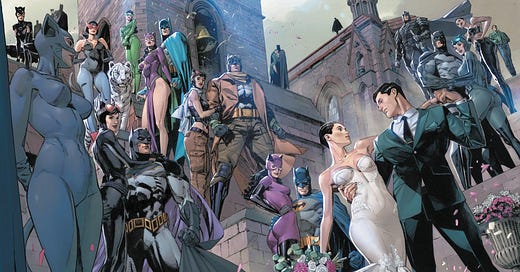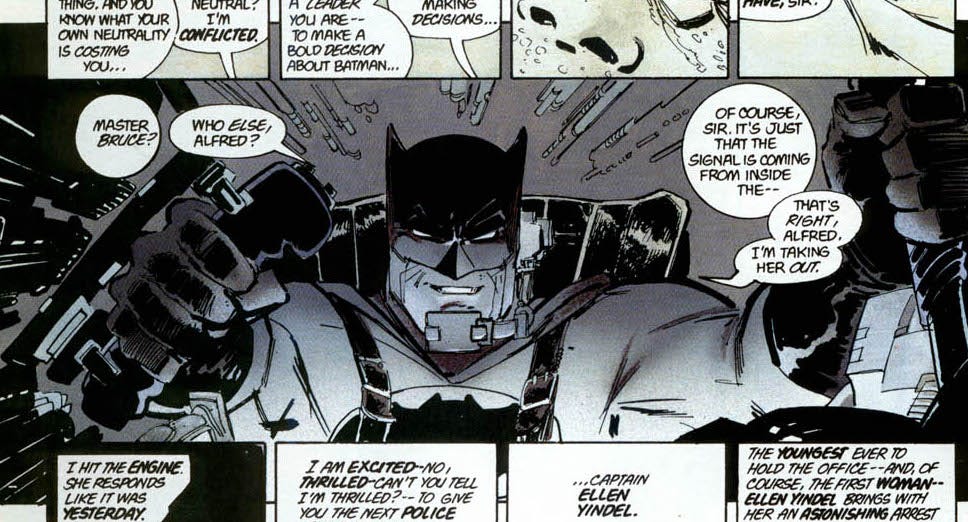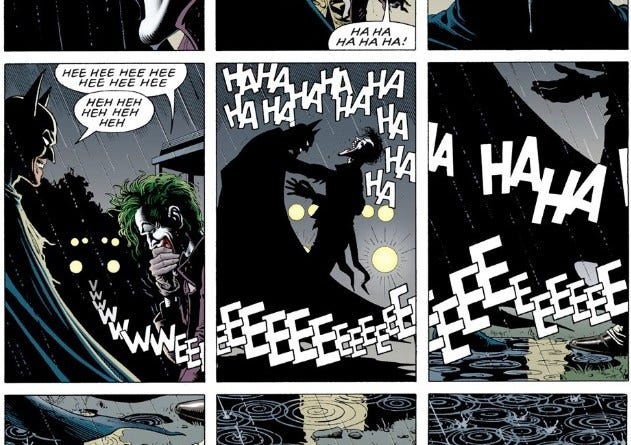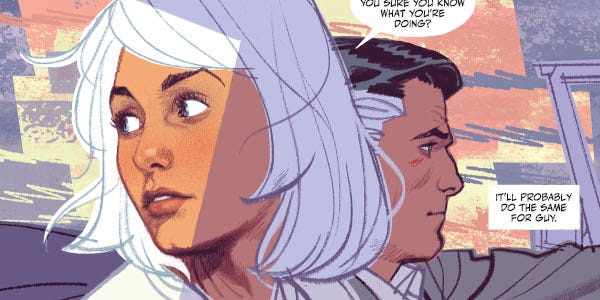With the recent (as predicted here) -gasp- moment in Human Target 6 from last week and the upcoming, something-old-something-new something-borrowed-something-blue issue 12 of Bat/Cat (pictured above…Clay Mann is so good), I’ve been getting a ton of good questions about what is and isn’t in continuity in DC’s Black Label Books. I thought I’d offer my opinion on the subject.
But first, a caveat! This is literally my opinion. It is not fact. It is not DC’s or the editors’ or the artists’ official position on the subject. I’ve written a lot of Black Label books, read even more. It is what I think when I write and read. I beg you to take it as that and just that.
That said, let’s do this.
In my mind there are THREE categories of Black/Label continuity, each modeled after a huge, industry changing book from the 1980s.
FIRST, you have the prestige “this-has-nothing-to-do-with-super-heroes” books, which take after Sandman. These are books usually touched by a little horror and crime and fantasy that are about life outside of the main DCU. Superman does not save the day in these books. These books have nothing to do with DC continuity. They do not affect the DC line.
I wrote one of these. It’s called The Sheriff of Babylon, and though it was done for Vertigo, if it were republished again today (and maybe it will be!), it would now be released under Black Label. As cool as it would be, Chris and Nassir and Sofia do not exist in the DCU. When reading Sheriff you don’t have to wonder why isn’t Batman fighting in Baghdad.
(And hey, I know Sandman has superhero cameos all over it, especially in the pre-Vertigo early days, and Dream appeared in Metal. I’m saying from a creators point of view we’re trying to create something like Sandman, like Preacher, like The Invisibles—a series that comes more from us and is controlled by us and not directly from or for the legacy of others.)
SECOND, you have the prestige “what-if/what-might-be” books that take after Dark Knight Returns. These are books that grab the DCU and twist it in ways you couldn’t do in every day continuity. Like DKR, these books live in a world that isn’t happening now, but maybe could happen some day, even might very probably happen someday—but we’ll very probably never reach someday in the regular monthly books. These are books that could be continuity, but aren’t yet in continuity, and most likely won’t ever be in continuity. They’re almost like a threat of continuity.
I read DKR and I think: I’m pretty sure this is what will happen to Batman in the future, but continuity will never catch up to this future, so I’m not sure that my pretty sure will ever be absolutely sure.
I haven’t written in this part of Black Label yet (though if you allow me to divide Bat/Cat, it’s where I think the future third of that book takes place). But I do have a book coming up some day in this world, and it’s immensely fun. This part of Black Label allows us to take DCU characters to limits we can’t in the main line.
(And hey, I know all what-if/what-might-be books become worlds in the multiverse and are therefore found inside continuity. But the question that interests us here is: will Earth 1 become exactly like those alternate earths…if you want to talk about continuity in those terms.)
THIRD, you have prestige books that live right beside the DCU but are not taking place at the exact moment of the current monthly DCU books. These are books that take after Batman: The Killing Joke. Like Killing Joke, they are in the present, abide by all the rules of current continuity, feature big game changing moments, and try to define the characters for the current generation. Like Killing Joke, they don’t immediately impact any of the other books on the stand, but can impact the books in the long term. They are not written in continuity, but they can become continuity.
Now that last part, the “can” part, is confusing, and is the crux of the matter. Because how and why a book goes from being beside continuity to the center of it is an oddly magical mechanism that is not in the direct control of the creators of that story.
What gets a book or a moment to make that leap is if the readers respond to it, if they like it, if they want more of it, AND if creators and editors respond to that energy and start incorporating it in future books. The continuity of these books is not set; it’s an ongoing process. Killing Joke wasn’t in continuity until the community decided it could not be ignored.
This third category is where I live most of my DC writing days. This is where Mister Miracle and Strange Adventures and Rorschach and Human Target and Bat/Cat (at least 2/3s of Bat/Cat) take place. They are books that exist next to continuity, and whether they become part of the DCU depends not on me or the brilliant people I work with, but on the brilliant people who read it and the brilliant people who hopefully, but not necessarily, will build something even better with it.
(And hey, I know that this isn’t a hard and fast rule, but hopefully you see that that’s kind of the point.)
All right, I hope that’s at least partially clear. Let me know what you think. Like I said, this is my opinion. What’s yours?
Oh! And this is a reader supporter newsletter. It really helps us if you subscribe (You also get a free monthly comic if you do subscribe!). It really, really helps us if you go for a paying tier and get some extras (And you still get the free comic!). Thank you in advance for all the awesome help!









I think these three categories make sense. The third kind seems the most interesting to me. Not necessarily because they are the best kind (I'm a sucker for the second type), but because seeing which ones get absorbed into mainstream continuity is intriguing to me.
Love this. I think point 3 is dead on and is how the best character changes happen in the dcu continuity.